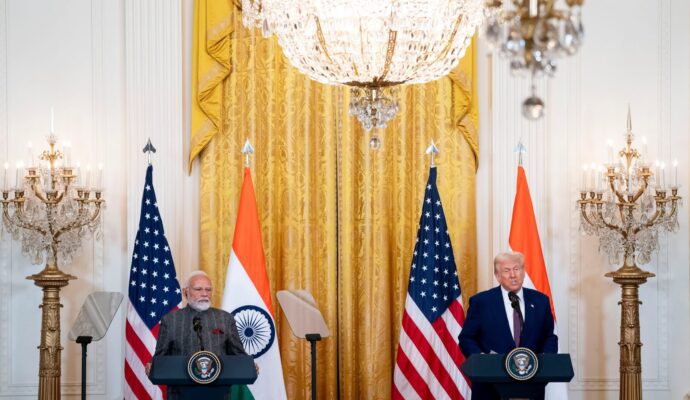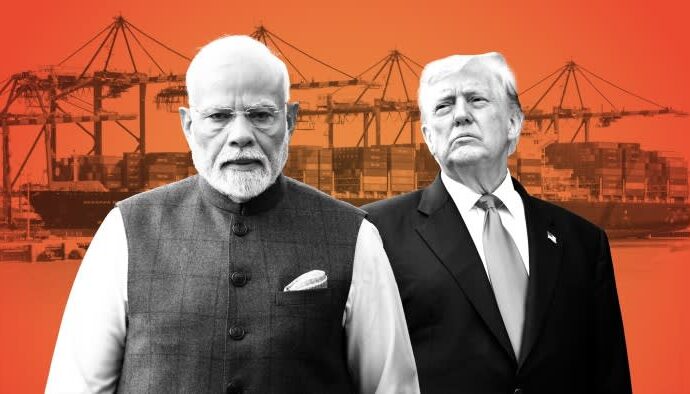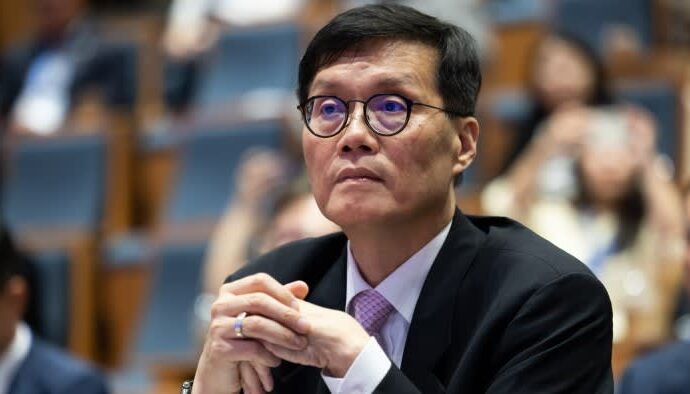“The Middle East has oil, China has rare earths,” declared then-Chinese leader Deng Xiaoping in 1987 while touring Baotou, Inner Mongolia, the site of one of China’s largest rare earth deposits.
Although rare earths are found across the world, no country has exploited them like China. Beijing recognised the strategic importance of these resources more than three decades ago and has built a dominant position in the production of global rare earth oxides — the raw, mined product from which rare earth elements can be separated.
Others are trying to catch up. Non-Chinese production of rare earth oxides increased nearly four-fold to 90,000 tonnes from 2015 to 2022, according to US data.
But China has not stood still. Production of rare earths has doubled from 105,000 tonnes to 210,000 tonnes in 2022, far outstripping the increase outside of its borders in absolute terms.
Chinese rare earth production continues to dwarf efforts elsewhere
Kilotonnes
Mining is only the first step. Rare earth elements must be separated from the oxides, refined and forged into alloys in a complex, highly specialised, multi-stage process, before they can be turned into magnets.
Here, too, there is a lot of ground for relative newcomers like Europe to make up. China has established a controlling position at each step of this process, through a concerted, long-term industrial strategy, backed by state subsidies.
“In the short term, China will still be the major player,” says Edoardo Righetti, a researcher at Brussels-based think tank CEPS. “You can’t break the competitive advantage they built over the last 30 years in the space of five years.”
EU officials fear that a move by Brussels last week to launch an anti-subsidy probe into Chinese electric vehicles could provoke retaliatory trade measures on other key materials.
China is already attempting to cement its position with protectionist controls on imports and exports of rare earths and processed materials. Beijing is also considering a ban on intellectual property exports for magnet-making technology.
China is so dominant in rare earths mining, processing and magnet manufacturing that Amanda Lacaze, managing director of Lynas, the world’s largest non-Chinese rare earths miner, says that “until we get a critical mass operating outside of China, China will retain that ability to pull the strings on the market.”
Technologies key to the transition
Demand for rare earths is rising because of their importance in the production of permanent magnets, a crucial component in advanced technologies key to sustainable growth, from wind turbines to electric cars and scooters.
Electric cars without permanent magnets require bigger batteries; wind turbines without them require more maintenance out at sea, making the little-known elements crucial to the shift away from fossil fuels.
They are also vital for weapons systems such as fighter jets. The US Department of Defense is playing a key role in Washington’s effort to diversify sources of supply.
The global market for rare earths is set to amount to just $9bn in 2023, but is forecast to more than double in 10 years to $21bn, according to Project Blue, a critical metals consultancy. The European Raw Materials Alliance (ERMA) expects the EU’s mobility and automotive industries — in which permanent magnets will play an important role — to grow to €400bn by 2030.
Rare earths are essential to the green energy transition
Demand by scenario (kilotonnes)
But current European production is negligible at both the mining and processing level. “There are no significant demonstrated European reserves, [there is no] recycling technology available or being implemented, and there’s almost no processing technology downstream except for in China. They are a symbol of all the issues Europe has in critical raw materials,” says Ton Bastein, a scientist at TNO, a research institute in the Netherlands.
Even in areas of technology where Europe has become a world leader, such as the production of wind turbines, it still depends on crucial components from China. It is a similar story for EVs and other innovations that are set to power a greener future.
Rare earth elements in green technologies
Lower social and environmental standards in China also make it difficult for a Europe reliant on more expensive labour to compete, according to the ERMA.
Europe’s plan to catch-up
With European demand for rare earths expected to rise five-fold by 2030, and the EU’s wider strategic dependencies in the spotlight amid the war in Ukraine, the bloc has decided it must broaden its sourcing. But it is not easy to get past China’s ascendancy.
There are known deposits of rare earths across the world, but few countries have exploited their resources because they are often uneconomical to mine.
EU officials have spoken of the need to engage in “critical raw materials diplomacy” to make up for any shortfall in minerals from China.
Last year, China accounted for 70 per cent of rare earth mining production — up from 58 per cent in 2021.
The Bayan Obo mine in northeast China contains 70 per cent of the world’s known rare earth element reserves. By 2005, it was responsible for 45 per cent of global production and now accounts for around 50 per cent.
Australia, with which the EU is currently negotiating a trade deal, is one alternative source. The country currently supplies 6 per cent of the world’s rare earth mining production.
The Mount Weld mine is owned by Lynas. The Australian company has been supported by the Japanese government through concessional financing since around 2010 — when Japan was hit by an unofficial rare earth export embargo from China.
The US, with ambitious plans to develop a domestic rare earths supply chain, is another option.
The owners of California’s Mountain Pass mine — currently the only rare earth mining and processing facility in the the country — have just recommissioned a separation plant, which gives the US the ability to process rare earths on home soil.
Between 1965 and 1995, Mountain Pass supplied most of the world’s rare earth materials. It closed in the early 2000s due to competition from Chinese suppliers but reopened in 2018. Last year it supplied 14 per cent of global rare earth mining production.
Europe currently has one facility for separating rare earths for magnet production, located in Estonia and operated by Canada’s Neo Performance Materials. Belgian chemicals group Solvay is planning to expand its site in La Rochelle, France, to do the same.
In January 2023, Sweden’s state-owned mining company LKAB said it had discovered Europe’s largest deposit of rare earth metals in Kiruna, Lapland, providing a potential boost to the EU’s efforts to rely less on imported raw materials.
The site currently houses the largest underground iron ore mine in the world.
Jan Moström, LKAB’s chief executive, says that the Kiruna rare earths project was vital to helping Europe protect itself against Chinese imports of electric motors, electric cars and wind turbines but, on its own, falls some way short of making the EU independent.
“Getting a self-sufficient mining industry is not possible but the question is how much can we mine in Europe,” he says.
That will also depend on how quickly it can come online. Exploring Kiruna is still in the early stages and the exact quality and economic feasibility of extracting the resource is not yet fully defined. LKAB estimates that first production could be reached in half the current expectation of 10-15 years, if licensing can be sped up.
Any company seeking to exploit reserves in Europe will need to overcome additional obstacles, such as environmental concerns, local opposition to new sites and cumbersome processes for granting permits.
Colin Mackey, head of European operations at Rio Tinto, which has struggled to get permits for the Jadar lithium mine in Serbia, says that “even though the industry is changing and sustainable mining is possible, and we can minimise the environmental and social impacts, local communities in reality don’t want a mine next door to them”.
The EU proposed the Critical Raw Materials Act (CRMA) in March to strengthen its own raw material supplies by measures, such as streamlining permitting, earmarking strategic projects as eligible for funding and setting targets for domestic sourcing, production and recycling.
It is also taking steps to build up centres of permanent magnet production, 94 per cent of which comes out of China, according to CEPS data. Neo Performance Materials received close to €19mn in EU funds to build a plant in Estonia near the Russian border.
But industry figures say Brussels needs to go further. Sebastien Meric, who heads up rare earths at Solvay, said that Beijing subsidises their industry, keeps prices opaque and controls the market through export quotas — on top of holding a technological edge. Separating rare earths in a plant is a hugely complex process with 1,500 steps, he says.
“The Chinese have perfected this industry for a very long time. They have fully automated their processes and are truly very strong,” he said.
The rare earth value chain: from mining to finished products
China completely dominates the latter stages of rare earth production
Source: Center for Minerals and Materials, Geological Survey of Denmark and Greenland
The EU also needs to catch up with other regions that have woken up to the importance of supporting strategic industries, argues Meric, estimating that his company’s La Rochelle site needs public funding covering 40-50 per cent of costs in order to be fully competitive.
“China is harshly dominant, Japan has kept an edge and the US is coming to the party. Europe needs to react and it needs to react big.”
The CRMA is likely to be adopted by the end of 2023, an extremely rapid passage in Brussels terms. But experts say it will make little progress in helping the EU reduce its dependency on China in rare earths by the end of the decade.
Targets in the CRMA to mine 10 per cent of EU’s rare earth needs, process 40 per cent and recycle 15 per cent by 2030 are “nowhere near feasible,” says Righetti from think-tank CEPS.
The recycling of many critical raw materials makes a marginal contribution to the EU’s consumption
% of overall demand that can be satisfied through recycled raw materials
The issues surrounding recycling, a key focus in the legislation, help explain why. The original proposal called for 15 per cent of raw materials deemed “strategic” to be recycled by 2030. As products such as copper and aluminium are widely recycled, experts said that an average target would be easily reached.
But in September, MEPs voted to recycle 45 per cent of each of these “strategic” raw materials found in the EU’s waste — a target yet to be negotiated with member states.
For rare earths, that presents a significant challenge; recycling is difficult because “[rare earths] are found in extremely tiny quantities, in complex products where they are glued together, making their extraction even more difficult,” says Emmanuel Katrakis, head of Euric, a recycling industry body.
“You can’t just put all the magnets that contain neodymium into one process and then get pure neodymium out. The neodymium is bound to an alloy and cannot be separated out again in its pure form, or only with enormous effort,” he adds. People involved in the negotiations said that lawmakers have little means of knowing whether these non-binding targets will be reached.
The CRMA will mandate that products containing permanent magnets come with information on how to remove them. The EU may also adopt legislation that lays down minimum shares of recycled rare earth metals that new permanent magnets must contain.
But many products that use rare-earth metals are still far from their end of life. Giles Dickson, the head of industry body WindEurope, points out that a typical European turbine in use today will not be decommissioned before 2030. Onshore wind farms have a lifespan of 20 to 25 years, while offshore turbines last 30 to 35 years “but there’s lots of lifetime extension going on”, Dickson says.
In an “optimum scenario”, WindEurope expects that 70,000 tonnes of rare earths could be recycled from permanent magnets in wind turbines by 2030. The commission has set a target of 1.5mn tonnes of recycled rare earths by the same date.
“Recycling will be important but never close to being sufficient,” says Moström of LKAB.
Real talk
To succeed in building a competitive rare earths pipeline, Europe may need to balance out the high costs of labour, energy and compliance with weighty subsidies.
“The proof of the pudding” lies in “how much money will be put on the table” to support the CRMA, says Dickson.
These might come with strings attached. One senior rare earths executive says that the question for Europe is whether Brussels can “impose relationships” on manufacturers receiving subsidies to make them buy materials from European suppliers, creating a supply chain that excludes China, even if this costs more than buying Chinese materials.
China dominates the rare earth value chain
Share of global total
Sources: USGS; CEPS
Europe needs to be “realistic” about what it will take to reduce dependence on China, says Sigrid de Vries, director of car industry group ACEA.
“Some rare earths are not abundantly available in Europe. That’s where robust EU industrial and trade policy steps in, which could alleviate costs in the long term,” she says.
But the bloc’s leverage may be limited. In a sign that sourcing critical raw materials from new partners will test its economic orthodoxy and negotiating nous, Australia has resisted calls from the EU to rule out export price controls on their raw materials. Malaysia, meanwhile, said on September 11 that it would explore a ban on exports of rare earthsto develop higher-value refining within the country.
Few believe Europe can replace China completely. Diplomats, experts and industry figures say the truth is that while Europe may diversify its supply chain slightly, it cannot achieve its climate goals without China.
Reducing reliance on China presents a “really, really steep” challenge, says one senior western rare earths executive, adding that the west is putting itself in danger by talking of building “independent” supply chains.
A senior EU diplomat acknowledges that it is too late for Europe to completely shrug off its dependency on China for rare earths and other critical minerals, and says that what Europe is trying to achieve is “like trying to repair a car while it’s still in motion.” But they insist the goal is about diversifying the economy, rather than transforming it.
“The idea is not to stop trading with China,” the diplomat says. “We need a healthy relationship and you have to be careful with the messaging. We don’t want to antagonise China but we don’t want to be dependent on them either.”


